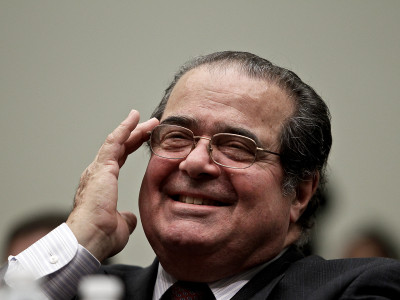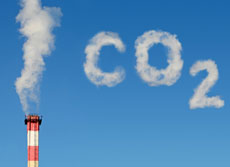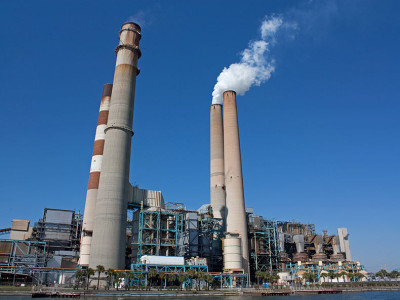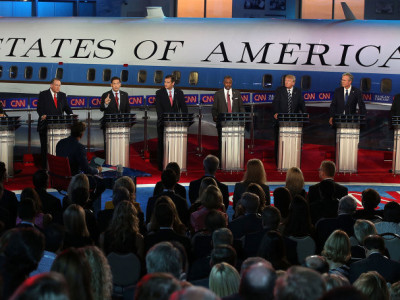Federal Climate Policy
Justice Scalia and Environmental Law
Scalia’s decisions were almost unremittingly anti-environmental.
Over the past three decades, Justice Scalia did much to shape environmental law, nearly always in a conservative direction. Because of the importance of his rulings, environmental lawyers and scholars are all familiar with his work. But for the benefit of others, I thought it might be helpful to summarize his major environmental decisions. The …
Continue reading “Justice Scalia and Environmental Law”
CONTINUE READINGThe Supreme Court Stay and the Dog That Didn’t Bark
EPA’s Requirements for New Plants Remain Intact
The Supreme Court’s stay of the Clean Power Plan was a surprise to almost all observers, maybe even to the lawyers requesting the stay. We can only speculate on what the five majority Justices had in mind, since there was no written opinion. The practical impact of the decision is also unclear. E&E news reports that the …
Continue reading “The Supreme Court Stay and the Dog That Didn’t Bark”
CONTINUE READINGThe Decision to Halt the Implementation of the Clean Power Plan is Outrageous
And Inconsistent with the Law
As I wrote earlier today, there is nothing good to be said about the U.S. Supreme Court decision today that halted the implementation of the President’s Clean Power Plan. The decision is a huge blow to the President’s climate agenda, it’s a setback for the Paris Agreement and it is a bad sign that the …
Continue reading “The Decision to Halt the Implementation of the Clean Power Plan is Outrageous”
CONTINUE READINGInitial Thoughts on the Supreme Court Staying the Clean Power Plan
Short Answer: There’s Nothing Good to Say About it
The U.S. Supreme Court, in a 5-4 half-page order, dealt the Obama Administration a big blow today by preventing its Clean Power Plan from going into effect until the case can be heard on its merits. We know from the order that the Court split in the usual way, with the four more liberal members of the Court …
Continue reading “Initial Thoughts on the Supreme Court Staying the Clean Power Plan”
CONTINUE READINGEPA Wins the First Round in Clean Power Plan Litigation
…But this is just the beginning—and the Supreme Court will have a say
As we reported last week, on January 21st, a D.C. Circuit panel denied Clean Power Plan opponents’ request for a “stay”—or temporary suspension—of the rule pending judicial review. Read the court order here. We have discussed the Clean Power Plan litigation at length on Legal Planet. As a quick refresher, the Clean Power Plan is …
Continue reading “EPA Wins the First Round in Clean Power Plan Litigation”
CONTINUE READINGDC Circuit Denies Stay of Clean Power Plan
The DC Circuit issued a judgment denying the request for a stay in the case challenging the Clean Power Plan, West Virginia v. EPA. The decision simply states that the petitioners failed to meet the “stringent requirements for a stay pending court review.” The court ordered the parties to submit a proposed briefing schedule by …
Continue reading “DC Circuit Denies Stay of Clean Power Plan”
CONTINUE READINGQuestioning the Questioners
Examining the role of moderators in Presidential debates
On Sunday night, the three remaining candidates for the Democratic presidential nomination took the stage in South Carolina for the third Democratic primary debate. I was pleased that one of the video questions of the night asked the candidates for their plan to address climate change. Although the Democratic candidates have discussed climate change policies …
Continue reading “Questioning the Questioners”
CONTINUE READINGWant an Economy-Wide Cap on U.S. Climate Emissions? Consider This Corner of the Clean Air Act
New report on Section 115 of the Act suggests an interesting post-Paris approach
A largely-untapped provision of the Clean Air Act authorizes the U.S. Environmental Protection Agency to develop and implement an economy-wide, market-based program to reduce domestic greenhouse gas emissions and achieve the Obama Administration’s Paris Agreement pledge, according to a report released today by several coordinating law school centers, including the Emmett Institute at UCLA. See …
CONTINUE READINGClimate Politics as a War of Attrition
Don’t expect a quick end to battles over climate policy. It could be a long war.
It may be a mistake to assume that opponents of climate policy will see the handwriting on the wall and gracefully give way to the inevitable. In politics, decisions are rarely made for all time, and agreements between opposing sides may not be enforceable. In such situations, game theorists have proposed war-of-attrition models for conflicts. In …
Continue reading “Climate Politics as a War of Attrition”
CONTINUE READINGTop 10 Environmental News Stories of 2015
More goods than bad, but some of each.
Here are the top ten stories, at least as I see them: A Warming World. 2015 will almost certainly be the warmest year on record. This is one more confirmation of recent studies indicating that either there was no climate hiatus or it has ended. Saving Wetlands and Water Bodies. EPA and the Army Corp …
Continue reading “Top 10 Environmental News Stories of 2015”
CONTINUE READING











